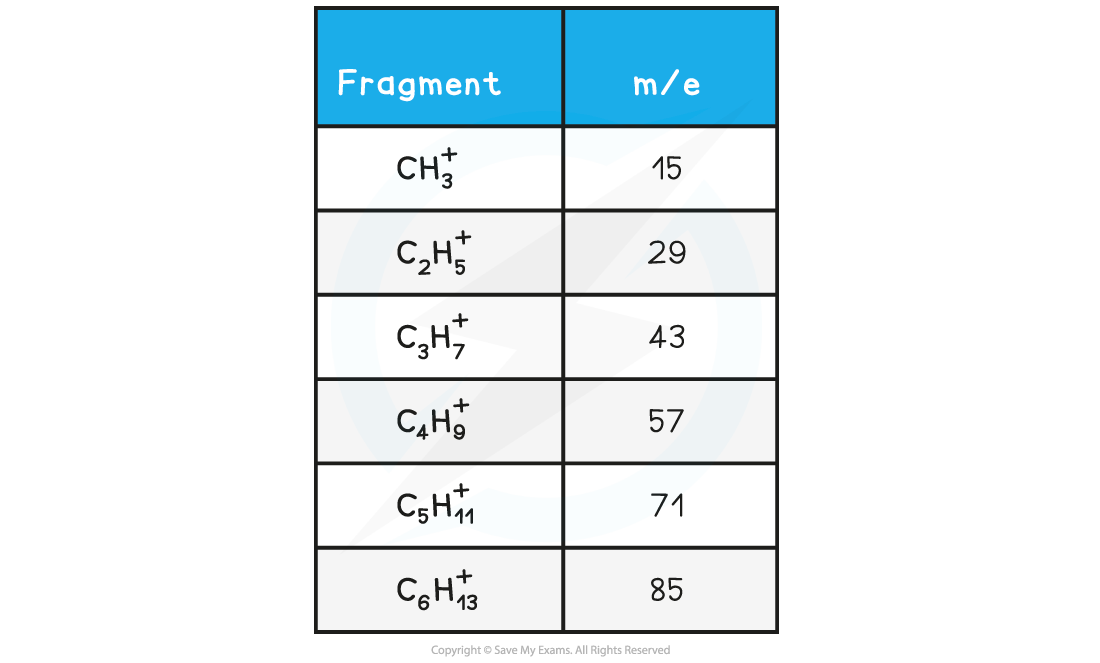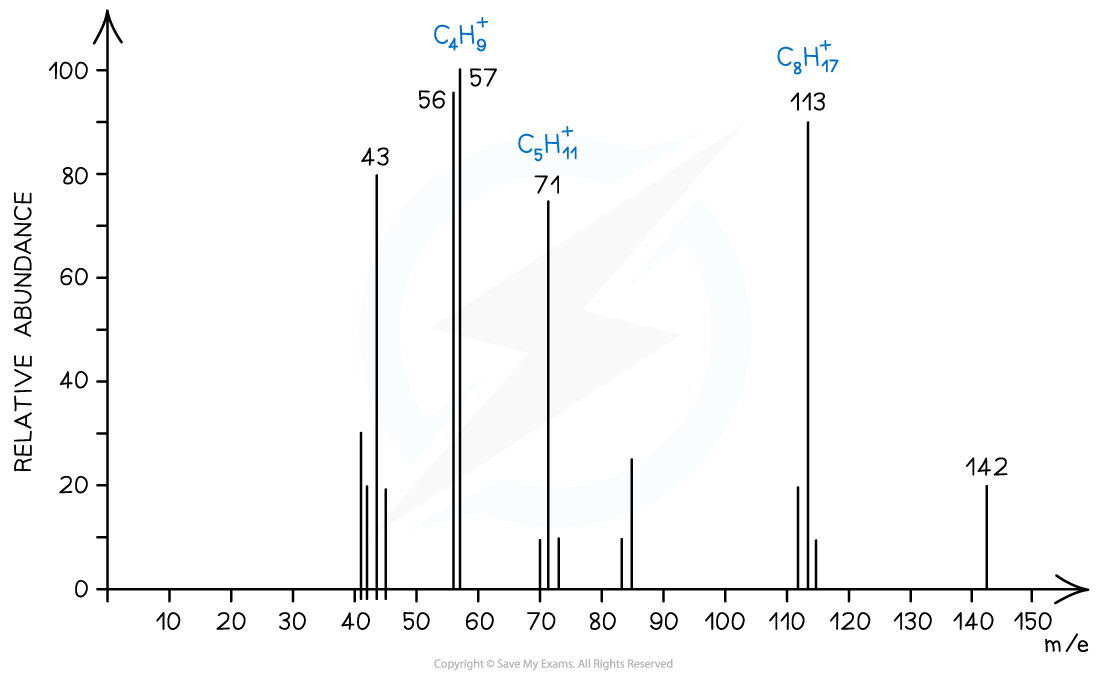Determining Molecular Mass
- When a compound is analysed in a mass spectrometer, vaporised molecules are bombarded with a beam of high-speed electrons
- These knock off an electron from some of the molecules, creating molecular ions:

- The relative abundances of the detected ions form a mass spectrum: a kind of molecular fingerprint that can be identified by computer using a spectral database
- The peak with the highest m/e value is the molecular ion (M+) peak which gives information about the molecular mass of the compound
- This value of m/z is equal to the relative molecular mass of the compound
The M+1 peak
- The [M+1] peak is a smaller peak which is due to the natural abundance of the isotope carbon-13
- The height of the [M+1] peak for a particular ion depends on how many carbon atoms are present in that molecule; The more carbon atoms, the larger the [M+1] peak is
- For example, the height of the [M+1] peak for an hexane (containing six carbon atoms) ion will be greater than the height of the [M+1] peak of an ethane (containing two carbon atoms) ion
Worked Example
Determine whether the following mass spectrum belongs to propanal or butanal
Answer:
- The mass spectrum corresponds to propanal as the molecular ion peak is at m/e = 58
- Propanal arises from the CH3CH2CHO+ ion which has a molecular mass of 58
- Butanal arises from the CH3CH2CH2CHO+ ion which has a molecular mass of 72
Fragmentation Patterns
- The molecular ion peak can be used to identify the molecular mass of a compound
- However, different compounds may have the same molecular mass
- To further determine the structure of the unknown compound, fragmentation analysis is used
- Fragments may appear due to the formation of characteristic fragments or the loss of small molecules
- For example, a peak at 29 is due to the characteristic fragment C2H5+
- Loss of small molecules give rise to peaks at 18 (H2O), 28 (CO), and 44 (CO2)
Alkanes
- Simple alkanes are fragmented in mass spectroscopy by breaking the C-C bonds
- M/e values of some of the common alkane fragments are given in the table below
m/e values of Fragments Table


Mass spectrum showing fragmentation of alkanes
Halogenoalkanes
- Halogenoalkanes have often multiple peaks around the molecular ion peak
- This is caused by the fact that there are different isotopes of the halogens
Alcohols
- Alcohols often tend to lose a water molecule giving rise to a peak at 18 below the molecular ion
- Another common peak is found at m/e value 31 which corresponds to the CH2OH+ fragment
- For example, the mass spectrum of propan-1-ol shows that the compound has fragmented in four different ways:
- Loss of H to form a C3H7O+ fragment with m/e = 59
- Loss of a water molecule to form a C3H6+ fragment with m/e = 42
- Loss of a C2H5 to form a CH2OH+ fragment with m/e = 31
- And the loss of CH2OH to form a C2H5+ fragment with m/e = 29
Exam Tip
A table of mass spectral fragments lost is included in the IB Chemistry Data Booklet Section 28 so you don't need to learn all the likely fragments
